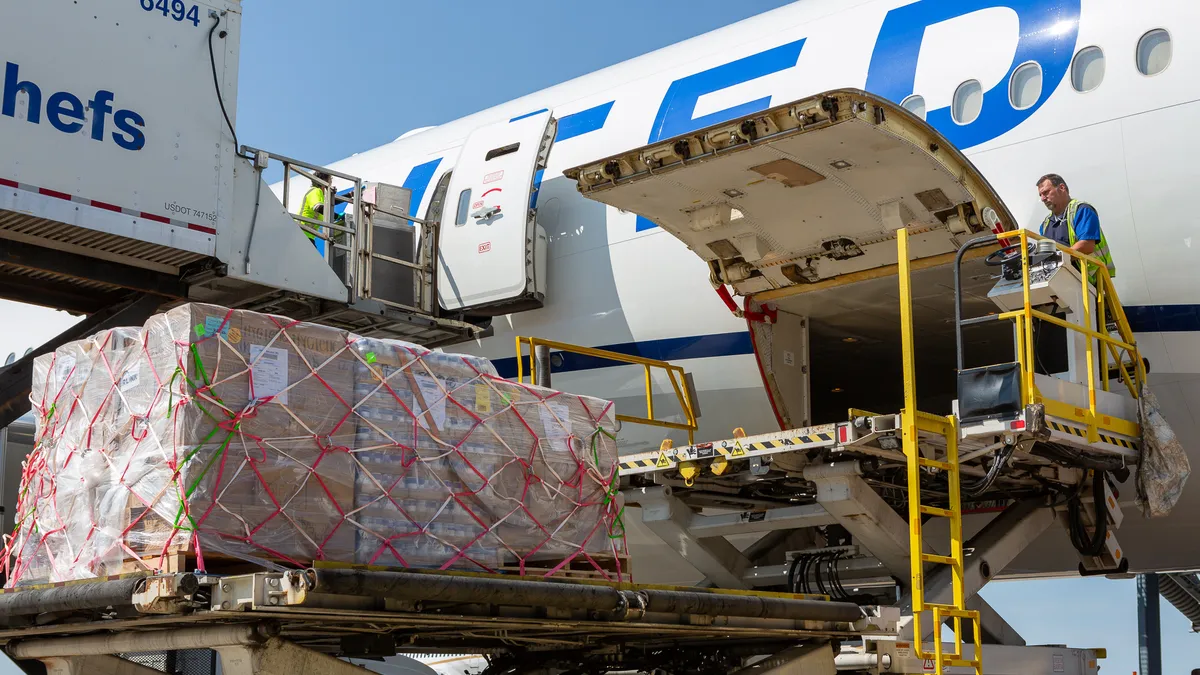Dive Brief:
- Eighty-one percent of supply chain professionals expect automation to increase demand for reusable transportation packaging, according to a survey from the Reusable Packaging Association (RPA) of 194 manufacturers and poolers of reusable transport packaging products, primary users of the products, and service providers in the industry.
- Automated environments will rely on standardized containers and pallets, a requirement that can be met with reusable packaging, according to RPA's state of the industry report.
- RPA CEO Tim Debus described a "symbiotic relationship" between automation advancements in materials handling and reusable packaging. "I don't think you're going to find in many cases that you're going to have this really high-performing, very automated environment in which you can have single-use packaging products," Debus told Supply Chain Dive in an interview.

Dive Insight:
Automation is a solution many operations managers are turning to in an effort to increase efficiency within their facilities and decrease labor cost. The global warehouse automation market is expected to grow from $14 billion in 2019 to $27.2 billion by 2025, according to an analysis released recently by Frost & Sullivan.
Investment will go to a number of automation technologies, including automated storage and retrieval systems, goods-to-person technology, automated guided vehicles, automated guided carts, autonomous mobile robots, drones and articulated robotic arms, according to Frost & Sullivan.
"[Automated storage and retrieval systems] have the highest adoption rate because of their promising features such as increased inventory storage density, reduced labor costs, and increased inventory-picking accuracy," Doraiswamy Bharath Sunderraj, a research analyst at Frost & Sullivan, said in a statement.
All of the forms of automation will benefit from the use of reusable packaging and containers, but "it's not necessarily a one-size-fits-all scenario," Debus said.
A highly automated fulfillment environment, such as the one Ocado developed, relies on standardized reusable packaging systems, but it might be different than the reusable plastic containers often used to carry perishables, according to RPA's report.
"When you're looking at investment in ... automated equipment, you cannot forget about the packaging product that you're going to be using," Debus said. Ultimately, the decision comes down to "making sure that you've got the right packaging components that are going to allow for that system to be most effective."
Collaboration has grown recently between companies that provide automation and those that provide packaging products. For example, the packaging provider IFCO worked closely with Sediasa Alimentación when the meat distributor was building an automated facility, according to a company blog post. But there is still room for more collaboration to ensure compatibility of products when it comes to stackability and other features. Standardization will be even more important as the industry begins to add more technology to its packaging that allows for monitoring variables, such as location and temperature, Debus said.
Companies are already looking at ways to improve operations through the use of reusable packaging. Woolworths Group was named a 2020 winner in Gartner's Supply Chainnovators awards for its new two-thirds pallet design, which is a pallet that is two-thirds the size of it it was originally using. "Productivity improvements across the store network have been realized while customers now say aisles and stores using the [two-thirds] pallet are less congested and easier to navigate," Gartner said in a report on the winners.
Companies' interest in automation may grow even further as a result of the pandemic. "Automation is going to be looked upon even more favorably and perhaps even accelerated in a post-coronavirus environment," Debus said.
This story was first published in our weekly newsletter, Supply Chain Dive: Operations. Sign up here.














